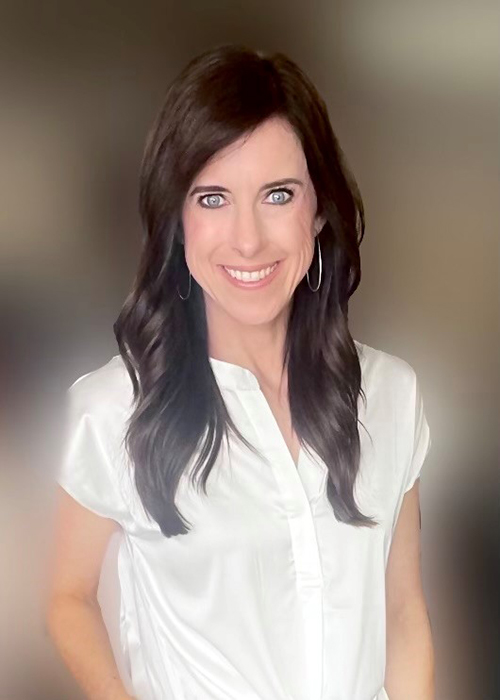Using Sound-Level Meter Apps to Prevent Hearing Loss
Noise-induced hearing loss can happen at any age, and the key is prevention.

Noise-induced hearing loss affects almost 24 percent of adults
According to the CDC, noise-induced hearing loss affects almost 24 percent of adults and 12 to 15 percent of school-aged children in the United States.
We recently discussed noise-induced hearing loss in rural adolescents with Leigh Ann Reel, Au.D., Ph.D., CCC-A. Reel is the Director of the Center for Speech, Language, and Hearing Research in the Doctor of Audiology Program of the TTUHSC School of Health Professions.
Noise-induced hearing loss cannot be reversed, so prevention is key. The use of earplugs and noise-reducing earmuffs is essential for protecting the delicate structures of the inner ear.
We continued our discussion with Reel to learn about another form of prevention that is growing in popularity: sound-level meter apps.
Which Sound-Level Meter Apps Are Best?

Leigh Ann Reel, Au.D., Ph.D., CCC-A
“There are now apps that use the internal microphone in your smartphone to turn it into a mini sound level meter,” Reel explains. “The app software displays the measurement as a decibel (or dB) value to help determine whether the sound is loud enough to damage hearing.”
Reel says that there are many sound level meter apps on the market, but she cautions people to be careful about which ones they use and how much trust they put into their accuracy.
“There are always new apps being released, and it’s hard for research to keep up,” she says.
The app with the most research behind it was designed by The National Institute for Occupational Safety and Health (NIOSH). The NIOSH Sound Level Meter app is free, but as of now, it is only available for iPhones.
Apple also has a noise app for its Apple Watch that provides notifications if noise reaches a potentially dangerous level.
Reel notes that it’s important to research the accuracy of a noise-measuring app beyond the customer reviews. Research has shown that some of the highest customer-rated apps unfortunately may be the least accurate.
How Loud is Too Loud?
“In general, any noise that is 85 decibels or greater has the potential to damage hearing,” Reel says. “The longer you’re exposed and the louder the noise, the higher the risk for causing hearing loss.” If you’re in an environment where the noise is 85 dB or greater, you should wear hearing protection.
What if you don’t happen to be walking around with a sound meter, as is the case for most of us? Reel’s recommendation is: If you’re at about an arm’s length from someone and you have to raise your voice to communicate, that’s a good sign that the background noise is 85 dB or higher.
Reel notes that a noise can be harmful to your hearing even when it’s not physically painful. However, if your ears ring after being exposed to a noise, there’s a good chance the noise was 85 dB or greater.
Hearing Loss Prevention is Key
Even if you don’t use an app to measure noise levels, protecting your hearing through preventative measures is essential because hearing loss can have a significant impact on quality of life.
“I’ve never talked to a person with noise-induced hearing loss who was thankful they didn’t wear hearing protection,” Reel says. “Instead, people always regret not protecting their ears.”
“As audiologists, we can help you find the type of hearing protection that’s most comfortable for you and works best for the noise you’re around,” she continues. It’s also important to get yearly hearing tests to monitor your hearing, especially if you’re regularly exposed to loud noise.
Unlike many other causes of hearing loss, noise-induced hearing loss is preventable. The choice is yours, and your hearing is definitely worth protecting!
Related Stories
Making Mental Health a Priority in the New Year
Sarah Mallard Wakefield, M.D., a psychiatrist with Texas Tech Physicians, talks about strategies to combat widespread and growing anxiety.
TTUHSC Dean to be Inducted into the National Academies of Practice as Distinguished Fellow
Gerard E. Carrino, Ph.D., MPH, dean of the TTUHSC Julia Jones Matthews School of Population and Public Health, will be inducted into the National Academies of Practice (NAP) as a Distinguished Fellow of the Public Health Academy.
TTUHSC School of Nursing Celebrates 10-Year Anniversary of the Abilene Community Health Center
The TTUHSC School of Nursing hosted a 10-Year Anniversary Celebration and Open House for the Abilene Community Health Center. The center is one of 71 Federally Qualified Health Centers (FQHCs) in Texas according to the Texas Health and Human Services.
Recent Stories
Making Mental Health a Priority in the New Year
Sarah Mallard Wakefield, M.D., a psychiatrist with Texas Tech Physicians, talks about strategies to combat widespread and growing anxiety.
TTUHSC Cancer Researcher Honored by National Academy of Inventors
C. Patrick Reynolds, M.D., Ph.D., director of the School of Medicine Pediatric Cancer Research Center at TTUHSC, has dedicated his life as a researcher to developing treatments for childhood cancers.
TTUHSC School of Nursing Celebrates 10 Years of the Veteran to BSN Program
The TTUHSC School of Nursing recognized the 10-year anniversary of the Veteran to Bachelor of Science in Nursing (VBSN) program during the fall 2025 commencement ceremonies held Dec. 13 in Lubbock, Texas.
